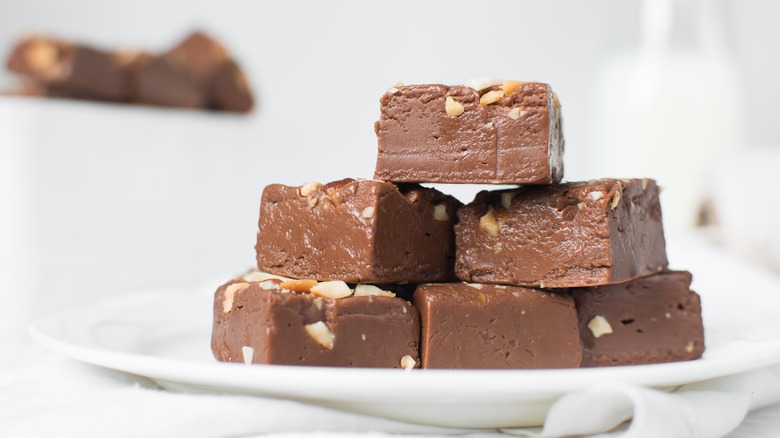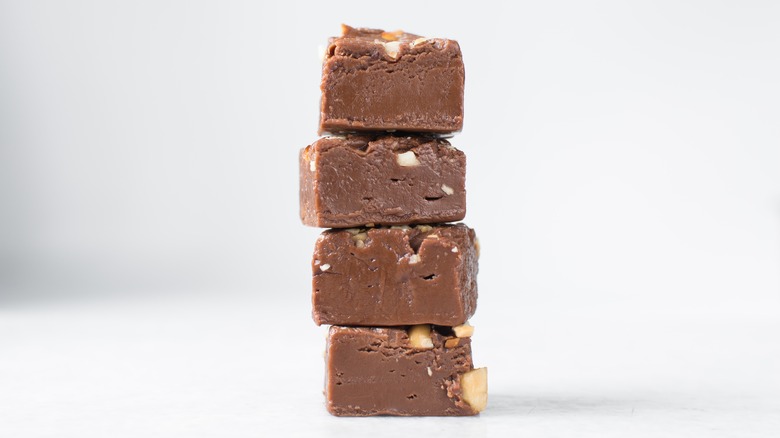How To Fix Grainy And Overcooked Fudge So It's Soft Again
It's the holiday season, and you've made a batch of fudge for friends and family, but you've just had a bite, and the texture is off. It tastes fine, except there's a graininess or a grittiness to the fudge that's unpleasant. Or, maybe the fudge is hard, brittle, and overcooked. The grittiness comes from sugar crystals that didn't dissolve into the fudge during the cooking process. Hard and overcooked fudge isn't great, either, but before you throw the whole pan out, try this simple trick.
For both problems, you'll need to melt the fudge back down to allow the sugar crystals to properly dissolve or to allow the overcooked fudge to soften up again. It may seem counterintuitive to cook overcooked fudge even more, but trust us, you just need to start the fudge over from scratch. Of course, if the fudge is burnt, that's a different problem, and cooking it again won't remove the burnt flavor. Grab the saucepan that you initially used to cook the fudge and toss the fudge back in along with 1 ½ cups of water and a splash of cream. Adding some cream of tartar is a helpful way to keep the sugar crystals at bay as well — it's not essential, but if you have some, definitely pour a little in. Bring the fudge to a boil slowly. You want the sugar to dissolve before it boils, so make sure the fudge is smooth before turning the heat up.
Other tips to avoid bad fudge
A great way to make sure your fudge is going to settle right is by using a candy thermometer. When bringing your fudge to a boil, check that the temperature reaches the ideal range of 237 to 239 F. That range will get you a pan of fudge that's in the Goldilocks zone of not too soft and not too hard. It will also help keep your fudge from becoming gritty since sugar crystals can form again if the fudge gets too hot. Overcooked fudge, which goes beyond 239 F, evaporates the water, which isn't what you want.
It also matters how you treat the fudge after it's cooked. Avoid too much stirring while you are heating the fudge since this agitates the sugar and causes it to clump into sugar crystals again. Once it's reached 237 F, allow the fudge to cool to 110 F, and don't stir the fudge at all while it's cooling. Less is more in this case. Other than these tips, treat the fudge like you normally would, and you'll have breathed new life into your winter treat.

